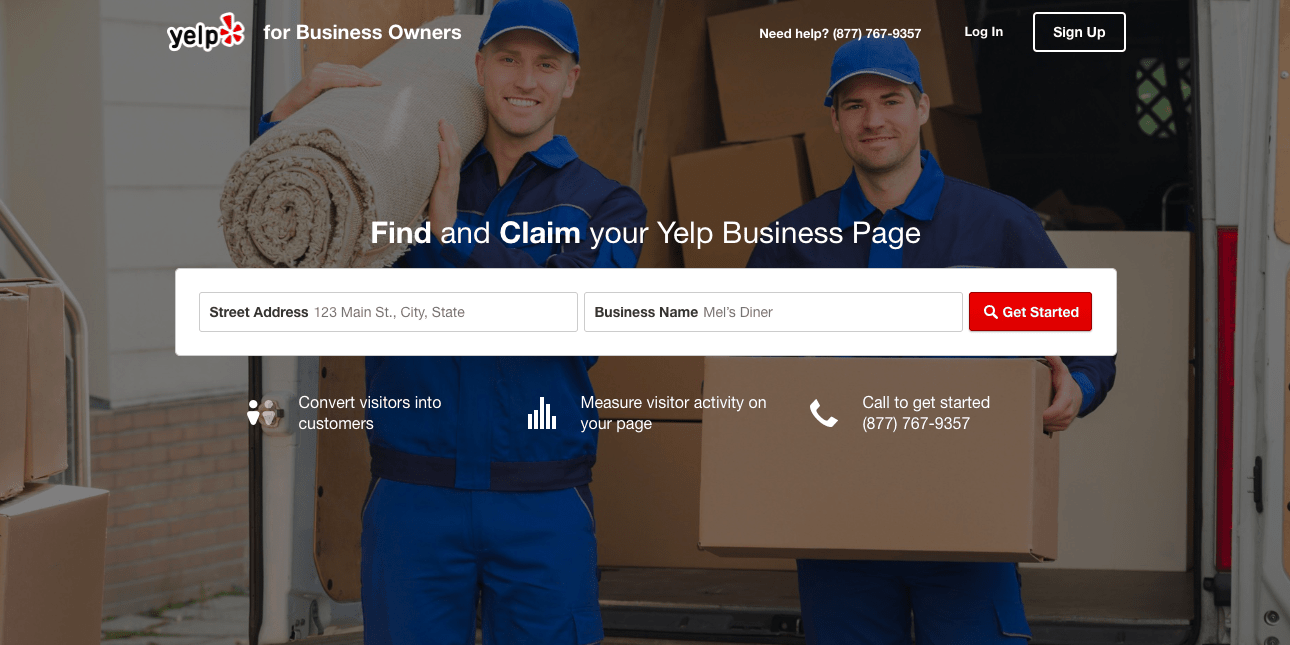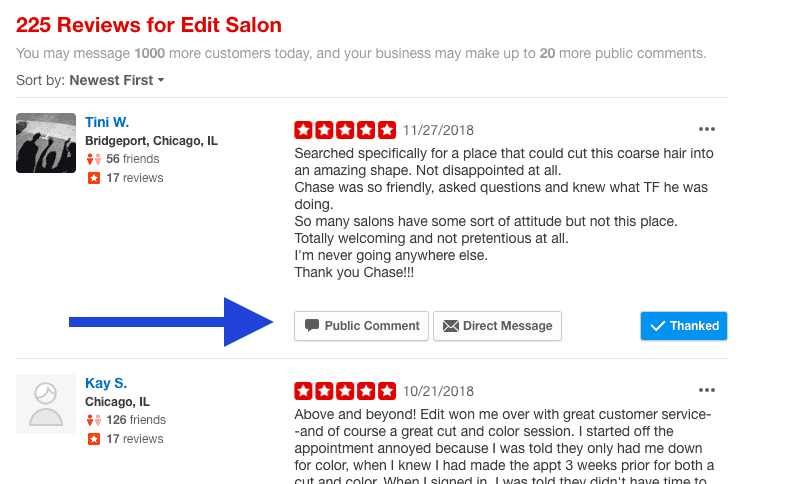Yelp is one of today’s most popular online review sites, with the unique power to influence purchase decisions and consumer behavior.
It has also become one of the top digital platforms for businesses looking to improve their online reputation.
Studies have shown that 82 percent of Yelp users visit the site when preparing to spend money. Also, 93 percent of Yelp users go on to make purchases at the business they looked up and researched on the site.
These numbers highlight the importance of having a strong online reputation on Yelp. Here are some best practices you can apply to boost your performance on the review site, and to build an attractive reputation that will drive customers to your business.
Yelp Reputation Management: Best Practices
First, claim your Yelp business page
Yelp reputation management starts with claiming your business on the site. Think of it as a way of planting your business flag on one of the world’s most popular review websites.
By doing so, you gain access to a suite of free tools to showcase your business on Yelp. It also gives you greater control of what’s being said about your business. Without claiming your page, it will be nearly impossible to manage your online reputation on Yelp.

With a claimed business page, you can:
- Respond to reviews with a direct message or public comment
- Reply to messages or quote requests from potential customers
- Upload and manage Yelp business photos
- Update or correct your business information, like your address, phone number, opening hours, website, and more
- Add more information that users may find useful, such as your business owner biography, your specialties, and more
- Track user views and customer leads
For detailed instructions, check out our guide on how to claim your business on Yelp.
After you claim your business on Yelp, be sure to also verify your address, map pin, phone number, and website. And make sure your business is listed in the right categories. This makes it easier for potential customers to find you.
Use high-quality photos to improve your reputation
According to a report, people searching Yelp for great local businesses spend 2.5 times more time on a business page with photos than on a page without.
This makes total sense. Think about it: would you choose to book a hotel without first looking at photos of the property and the rooms? Would you buy clothes or accessories online without seeing them first?
Photos help you build trust. It’s a way of letting people get to know your business. It adds to the visual appeal of your presence on the review site. And it inspires confidence in users who are looking to make a purchase decision.
Luckily, there is no limit to the number of photos you can upload to your Yelp business page. Just make sure you add high-quality images. No low-resolution shots, blurry closeups, or dark and grainy shots. Choose photos that will attract customers to your business page and keep them engaged.
Track and respond to Yelp reviews
Depending on what they say, Yelp reviews about your business can bring customers in or scare them away. Reviews can definitely make or break your online reputation.
According to Nielsen:
- 74 percent of the consumers searching online for a local business turn to review sites like Yelp.
- Review sites also drive higher conversion than search engines and social networks.
- Moreover, 92 percent of consumers make a purchase after visiting Yelp at least sometimes, frequently or almost always.
That’s why you have to keep an eye on the reviews you’re getting on Yelp. When you track Yelp reviews, you can gain valuable insights into the ways you are wowing your customers, along with the areas that you can improve on.
Staying on top of your Yelp reviews can also provide ideas on how you can boost your visibility on the review site, improve your online reputation, and engage more effectively with Yelp users and potential customers.
One way to engage is by responding directly to the reviews, either by direct message or public comment. According to research, 45 percent of consumers say they’re more likely to visit a business that responds to negative reviews.

Need inspiration? Check out these templates and examples of how to respond to reviews — positive, neutral, or negative.
Respond to and send messages to Yelp users
A few years ago, Yelp enabled users to send messages directly to businesses.
With the “Message the Business” or “Request a Quote” feature, Yelp users can message businesses directly with questions about the business or their services, such as those involving pricing, availability, offerings, or anything else Yelpers may need to ask.
You may be receiving notifications that Yelpers have sent you a message using the Message the Business feature (or, for certain categories, “Request a Quote”), which allows potential customers to start a conversation with you.
Engage in these conversations. It will help you build trust and get a reputation boost. After all, consumers value responsiveness, and if your business can communicate actively, promptly, and efficiently with Yelp users (either by responding to reviews or to direct messages), you’ll be able to improve your Yelp online reputation and show the community that your business listens to customers.
You can log into your Yelp for Business dashboard to reply, but you can also respond directly to the email message without having to log into your Yelp business account.
Multiple business locations? Find a technology partner
Yelp online reputation management can be a little tricky if you have multiple business locations. If that’s the case, consider working with a technology partner.
A review and feedback software company like ReviewTrackers can help you save time and get optimal results from your Yelp reputation management efforts. Brands like US Bank, American Family Insurance, and Legoland use ReviewTrackers to inform better business decisions, build a strong online reputation, and improve the customer experience.
Through a single dashboard, ReviewTrackers users can access features like Yelp review tracking, review response, review monitoring and review notifications (across Yelp and 100+ other sites), sentiment analysis, customer feedback campaigns, review widgets, and more.